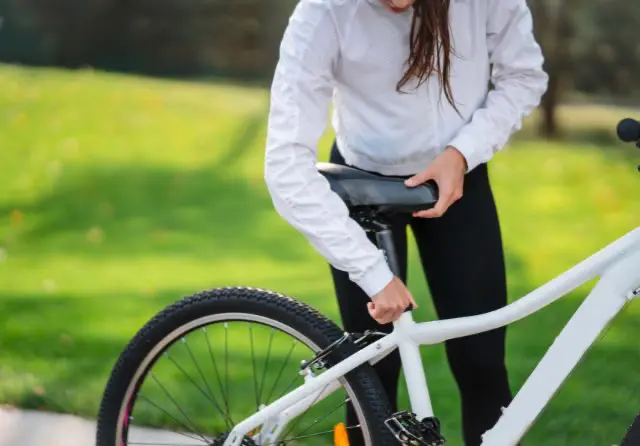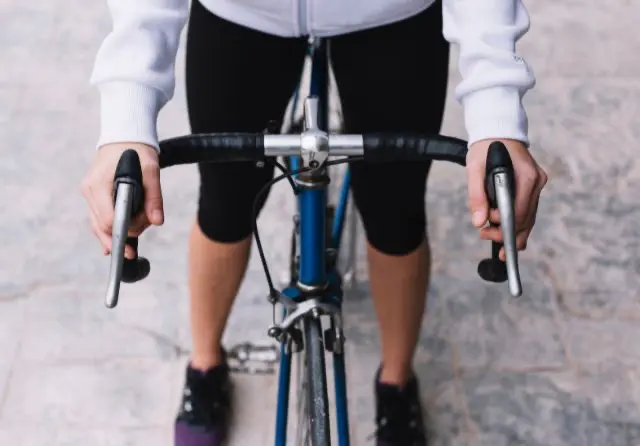Choosing a bike isn't just about design or budget, it's about finding the perfect balance between comfort, performance and safety. I'm sure it's happened to you: you get on a bike and something doesn't quite fit. Maybe the handlebars are too far away, or you feel like your legs don't have enough extension when pedalling. These little details can be very important when it comes to enjoying your bike.
In this article, you'll find out why the size of a bike is a key aspect of choosing your bike. We give you practical tips to make your next bike your best adventure companion.
Table of Contents
ToggleWhy is it important to choose the right size of bicycle?
Bike size is much more than just a technical detail. A bike that fits you not only improves your cycling feel, but also makes your effort more efficient and effective. Here are three essential reasons to pay attention to the size of your bike.

Comfort and performance
It goes without saying, but it's no less important: comfort is key to enjoying cycling. If your bike is not the right size, you will probably not be able to ride comfortably. This can result in constant discomfort and a feeling of exhaustion before your time. However, a well-fitted bike allows your body to adopt a correct natural posture. A bike that is the right size not only improves performance, but also makes every ride a much more enjoyable experience.
Long-term injury prevention
It's not just a question of immediate comfort. An ill-fitting bike forces you into awkward positions that, over time, can lead to knee, back or neck pain. If ignored, these discomforts can lead to chronic injuries. A proper fit from the start is one way to protect your body and ride without discomfort for years to come.
Key factors in determining the right size
Factors such as your body measurements and the type of activity you will be doing play a key role in ensuring comfort and efficiency. It's not just about finding a bike you like, it's about being able to use it safely and enjoy it without discomfort. Here's how to consider some key aspects to find the best bike for you.
Measuring rider height
Your height is the starting point for choosing your bike frame size. It's a basic but essential measurement, as brands often offer sizing guides based on height ranges. While choosing bike size based on height is not the only criterion, a bike that fits your height will help you maintain a balanced posture and ride efficiently. Ideally, combine this information with other body measurements to further refine your choice.
Inseam length and its relationship to the frame
In order to calculate the size of the bike it is important to know the inseam length. Unlike the overall height, this measurement allows you to calculate the frame height more accurately, especially on road or mountain bikes.

How to measure the inseam length
- Stand barefoot with your back straight and your feet slightly apart (about 15-20 cm).
- Place a firm book between your legs, pressing upwards as if you were sitting on the saddle.
- Measure the distance from the floor to the top edge of the book.
With this measurement, you can calculate the frame size according to the type of bike:
- Mountain bike (MTB): multiply your inseam length (in cm) by 0.54 to get your frame size in centimetres.
- Example: 80 cm inseam x 0.54 = 43.2 cm.
- Road bike: multiply your inseam length (in cm) by 0.65 to calculate your frame size in centimetres.
- Example: 80 cm inseam x 0.65 = 52 cm.
Additional factors to take into account:
- These formulas are approximate and may vary by manufacturer. Always consult the specific guidelines for the brand you are interested in.
- Other factors, such as your arm length and intended use of the bike, may also influence the ideal frame size.
- Whenever possible, test ride your bike to make sure the frame fits your body perfectly.
Practical methods for choosing the size
Choosing the right size for your bike isn't always easy, but there are practical methods that can help you confirm that you've made the right choice. Here are some options to consider:
Size guides according to bicycle brands
Many manufacturers provide specific sizing charts based on body measurements such as height and inseam length. These guides are often tailored to the designs of their models, so it is advisable to consult them before making a purchase. While general formulas are a good place to start, brand-specific guides can help you fine-tune your choice and avoid mistakes.
Physical tests in specialised shops
Whenever possible, test the bike in a specialised shop. Riding the model you have in mind will allow you to see how you feel when pedalling, whether you can reach the handlebars comfortably and whether your legs have the right range of motion. The experts at the shop can adjust the saddle and handlebars so you can see what a real setup would look like.
Additional tips for beginners and advanced cyclists
Whether it's your first bike or you're an experienced rider, these additional tips will help you before you buy your bike:
Consult with experts or professional trainers
Having an expert opinion can save you time and hassle. In specialised shops or with professional trainers, you can get personalised advice based on your measurements, goals and level of experience. They can guide you on frame size, bike type and adjustments to make you feel comfortable right from the start.
La importancia de realizar ajustes periódicos
Over time, wear and tear on your bike's components or changes in your body can mean that the initial fit is no longer ideal. Regularly checking and adjusting items such as the saddle, handlebars and pedals not only improves your performance, but also prevents discomfort and possible injury.
Evaluation and readjustment after a period of use
After a few months of use, it is advisable to assess how you feel on your bike. If you notice discomfort, such as pain in your back, knees or wrists, you may need to readjust the position of the saddle, the tilt of the handlebars or even change certain components. This process is key to keeping your bike adapted to your needs.
Choosing the right size of bike can be confusing, but we hope the instructions we have provided will help you make the right choice. If you are thinking of enjoying a good bike tour and you are in Gran Canaria, Scooter and Bike Rental may be the perfect solution for you. Also, if you want to try a bike before you decide, we offer you the best bike rental in Gran Canaria, with a wide variety of models to choose from! Tour the island with our bicycles, designed for all tastes and styles. All you have to worry about is pedalling and enjoying the scenery, book yours and live a unique experience on wheels!




